Nakayama is in between Narita And Haneda International Airport
<クッキーについての同意並び欧州居住者向けプライバシーポリシー>
中山・下総・散歩道
Shinkawa | a canal built in Edo period
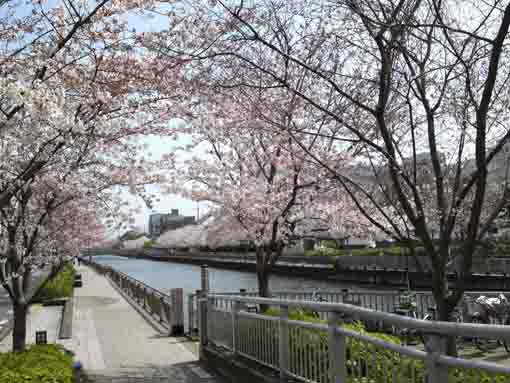
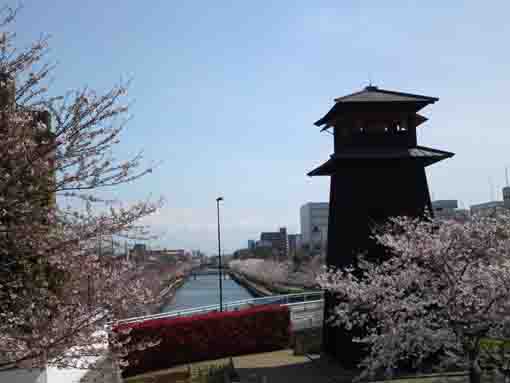
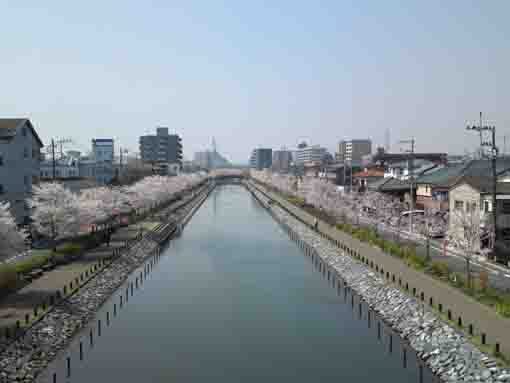
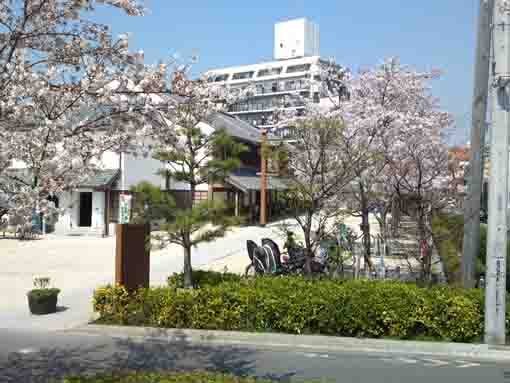
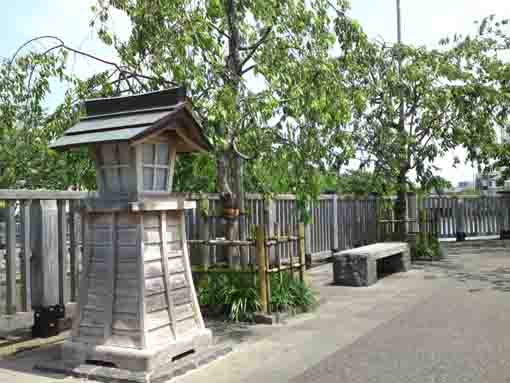
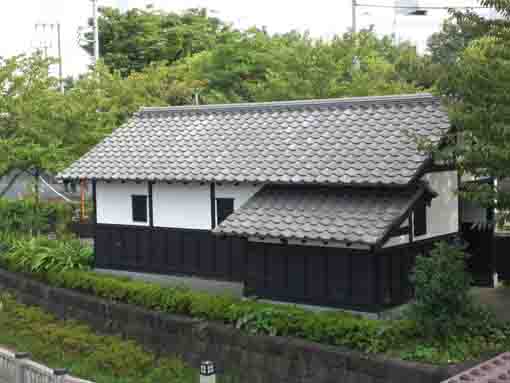
Shinkawa River is a canal connecting Arakawa and Nakagawa to Edogawa River. It was called Funaborigawa River. Soon After Ieyasu Tokugawa moved to Edo in 1590, he dag Onagigawa and Funaborigawa to build a waterway to Edogawa River to bring salt made in Gyotoku to Edo. This canal had become a main artery that brought thousands of products from northern part of Japan to Edo during Edo period. About 60 ferries had passed through it every day. There are many temples existing in Funabori, Ichinoe and Kasai that could tell it prosperity at that time. Moreover, there had been many pear gardens producing 'Shinkawa Nashi' in the south side of Shinkawa River from late Edo period to Taisho Era and the pears were very popular among people in Edo. It was written on a signboard in Sinkawaguchi Jidokoen Parrk in the east end of the canal, and the stone monument of Shinkawa Nashi is preserved in Jokoji Temple near Imai.
Visitors could enjoy seeing thousands of cherry trees and some wooden Edo style buildings along Shinkawa River. Why don't you visit the river?
Shinkawa River
Shinkawa River is a historical asset by Edogawaku registered in Febraury 12 of 1986
By the late Sengoku period, a waterway from Edogawa River had passed through Furukawa River then it had entered Shinkawa at Sankaku to go west.Soon after Ieyasu Tokugawa moved to Edo in 1590, he ordered building a new waterway connecting to Gyotoku including the waterway above, then building Dosan Bori Canal and Onagigawa River and it was completed.
In 1629, a new waterway had dug in the east of Shinkawabashi Brigde now standing and connected the western part of the canal, therefore the canal is now called Shinkawa River. After that, Shinkawa became the waterway to bring salt produced in Gyotoku to Edo. At that time, the area was very prosperous, there were many shops dealing with soy sauce and miso and many restaurants opened along the river.
Shinkawa River had been developed as an important waterway connecting to Edogawa and Tonegawa River for thousands of ships and ferries to bring various kinds of products and people from the eastern part of Japan to Edo.
However, the both eastern and western lock gate was closed in early Showa era and the ships and ferries were disappeared after the construction of Arakawa Drainage Canal had completed.
Moreover, tall bank protections along Shinkawa River built since the ground around these areas had sank by dipping up too much subterranean water during the high growth phase of Japna in the middle of the 20th century, so people had lost any intrest in the river.
From 1993, the banks of Shinkawa River have been rebuilt as strong as an earthquake-resistance measure, some water parks have been built and thousands of cherry trees along it have been planted. Now it has become as an oasis in the urban area in Tokyo and residents enjoy visiting.
新川沿岸案内板
引用、抜粋並びに参考
新川沿岸案内板
新川口児童公園「新川梨について」案内板
江戸川区ホームページ
市川市ホームページ
Azalea Blossoms Blooming along Shinkawa River
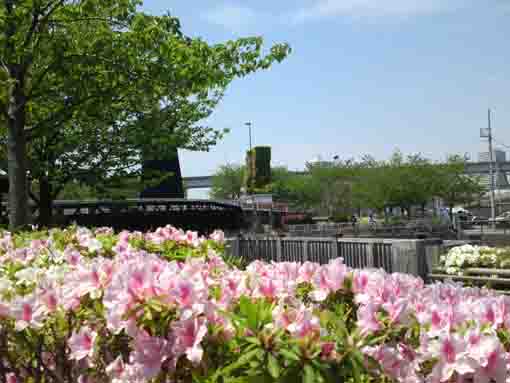
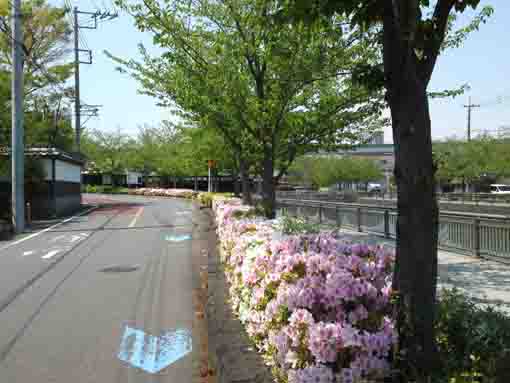
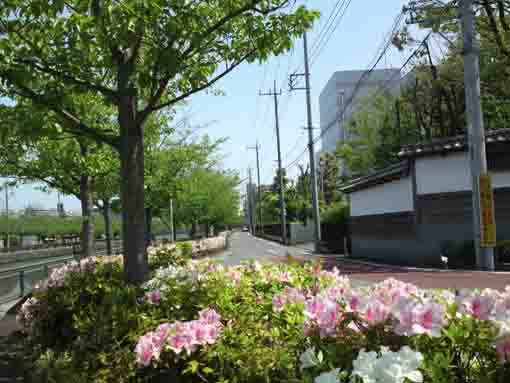
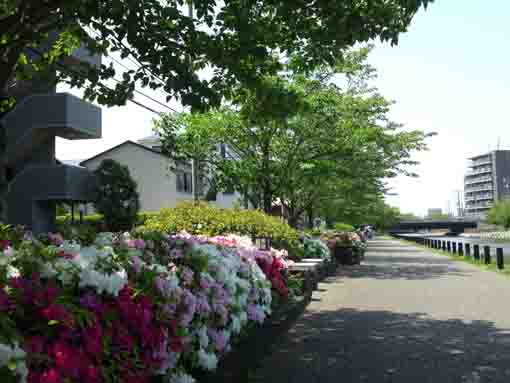
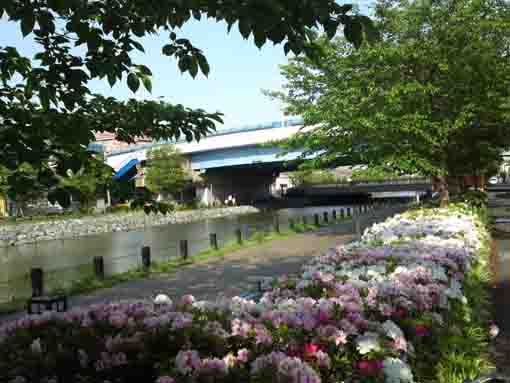
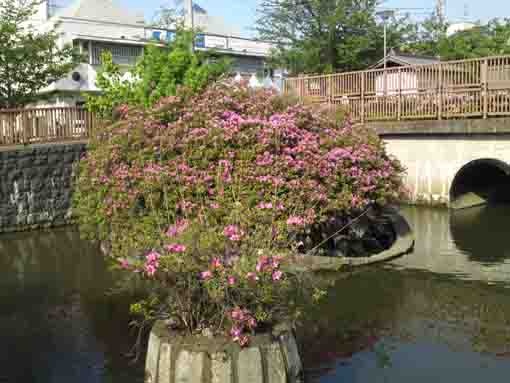
Many beautiful azaleas bloom along Shinkawa River from the east end to the west.
A Walk Along Shinkawa River

Thousands of Cherry Trees along Shinkawa River
In spring, thousands of sakura along it beautifully bloom.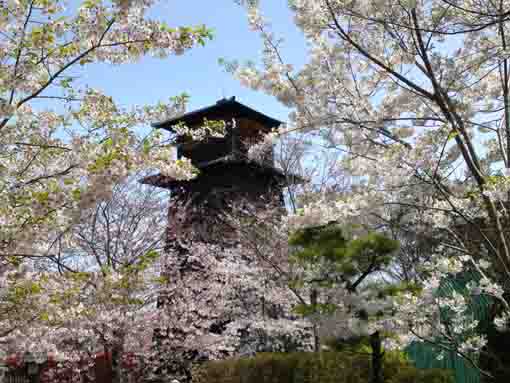
Shinkawa Nishi Suimon Hiroba Plaza
A fire lookout and an old lock gate are the symbols.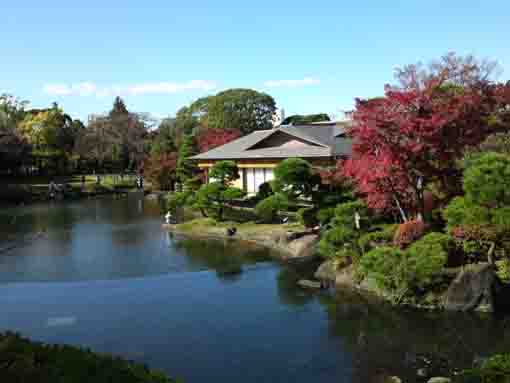
A Walk On Ukita
Ukita is the mother land of Kasai, and there are beautiful parks.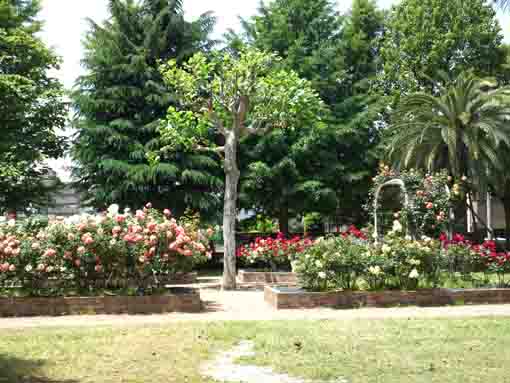
Ukita Higashi Koen Park
It sounds like a secret garden, it has a ume and a rose garden.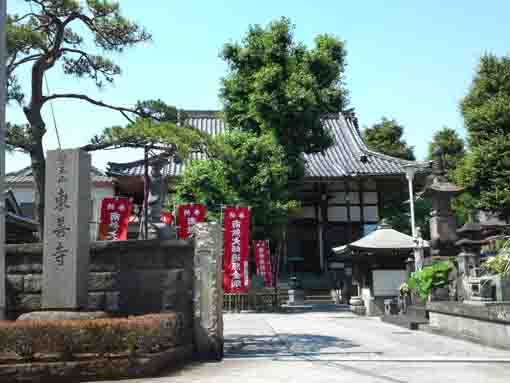
Nagashima Kuwakawa as to say Teramachi in Kasai
There are many temples in this small areas.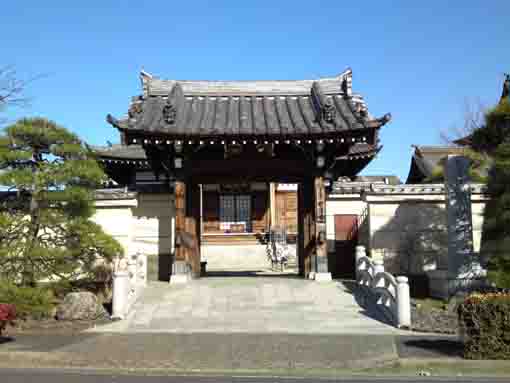
Jokosan Myorenji Temple
It has beautiful gardens and stylish architecters in it.The Photo Movie of Shinkawa Senbon Zakura
Cherry Blossoms along Shinkawa River in 2020
Cherry Blossoms along Shinkawa River in 2019
Let's enjoy seeing Shinkawa Senbon Zakura (thousands of cherry trees along Shinkawa River)!
The Location and Access to Shinkawa River
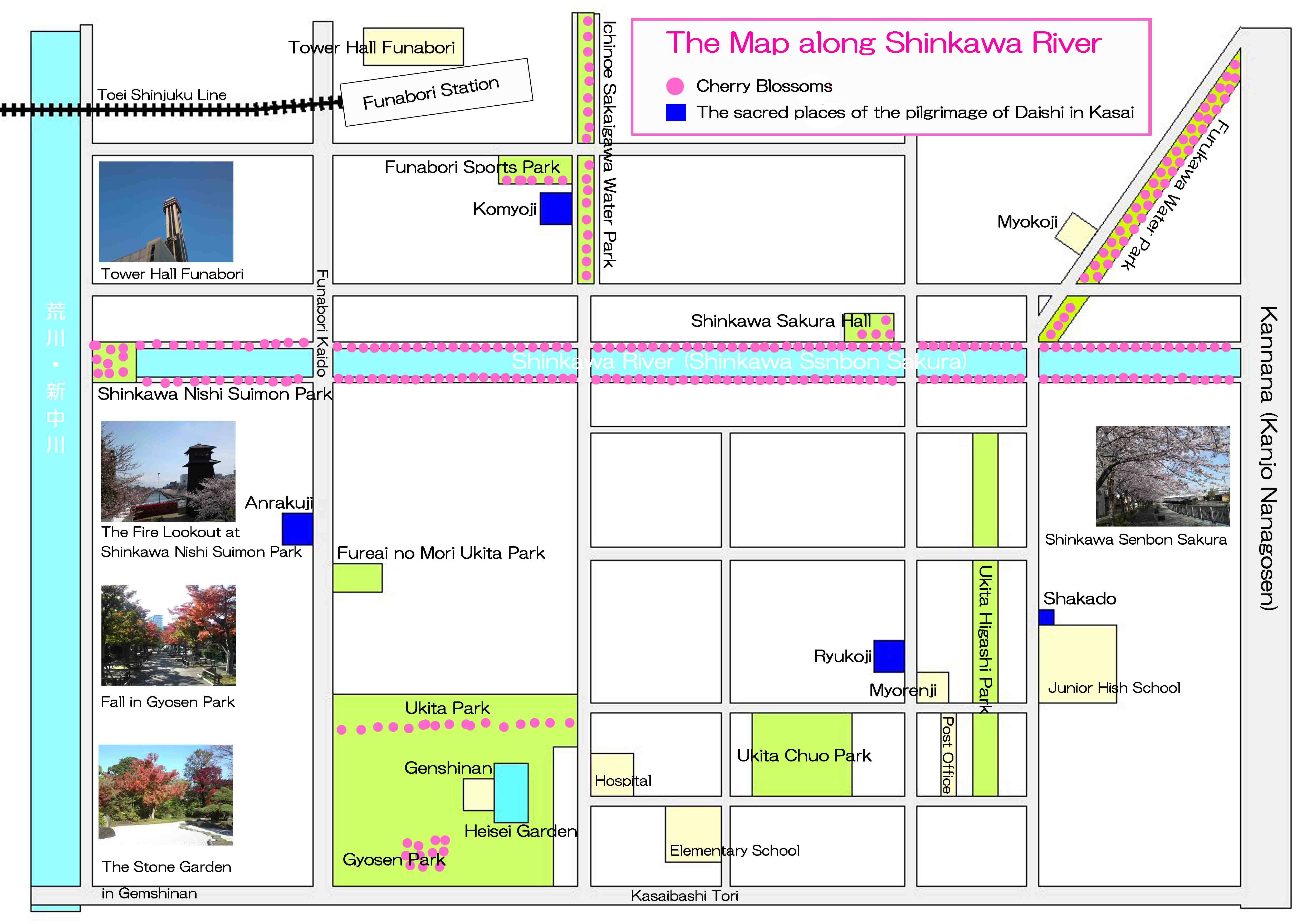
The Map along Shinkawa River
The Map along Shinkawa River and Shinkawa Senbon Sakura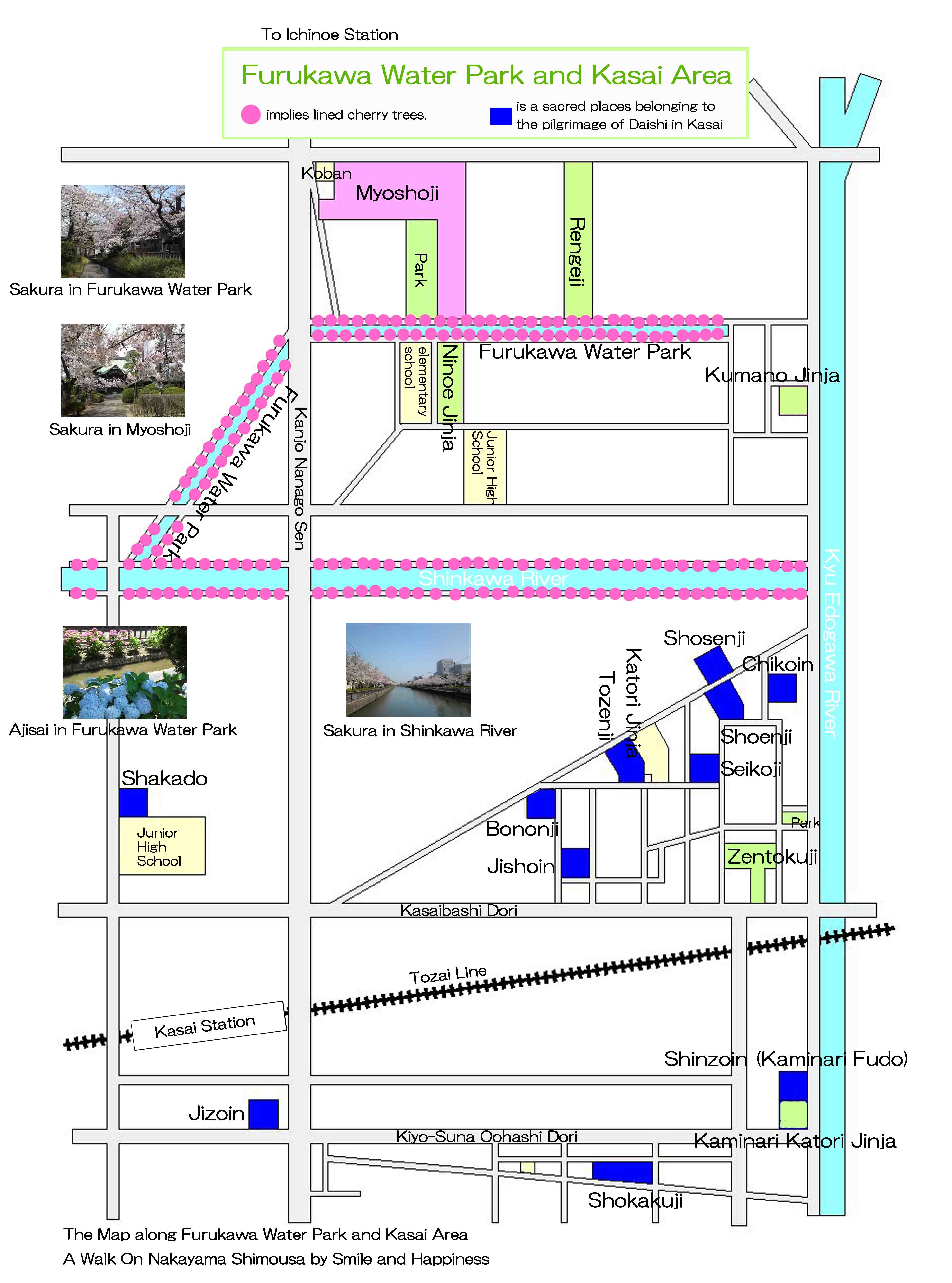
The map of the noted spots along Furukawa Water Park and Kasai
The Map of the landmarks along Furukawa Water Park and in KasaiShinkawa River (Funaborigawa River)
- Shinkawa River has great accessibilities from both Narita and Haneda International Airport.
- From Narita International Airport, take Sobu Express Line bound to Tokyo or Yokosuka and get off at Funabashi Sta, then transfer the line to Sobu line bound to Nakano or Mitaka ang get off at Motoyawata Sta. Or take Keisei-line bound to Ueno and get off Keisei Yawata Sta. Both from Motoyawata Sta and Keisei Yawata Sta, transfer the line to Toei Shinjuku line and get off at Funabori Sta.
- From Haneda International Airport, take Keikyu-line bound to Narita, and get off Shinagawa Sta and transfer the line to Sobu Express line bound to Narita International Airport or Chiba, and transfer the line at Ichikawa Sta to Sob line bound to Nishi Funabashi, Tsudanuma or Chiba and get off at Motoyawata Sta. Or take Keikyu-line bound to Narita, and get off Keisei Yawata Sta. Both from Motoyawata Sta and Keisei Yawata Sta, transfer the line to Toei Shinjuku line and get off at Funabori Sta.
- From Iwamotocho Station at Akihabara, take Toei Shijuku line bound to Motoyawata and get off Funabori Sta.
- Take 5 minute walk from Funabori Sta.
The Noted Spots around Funabori, Ichinoe and Kasai
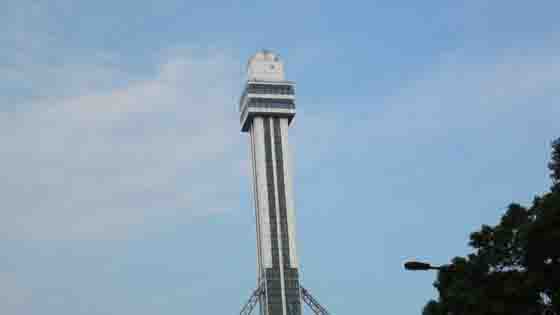
The Observatory on Tower Hall Funabori
Visitors could enjoy seeing some special views of Tokyo.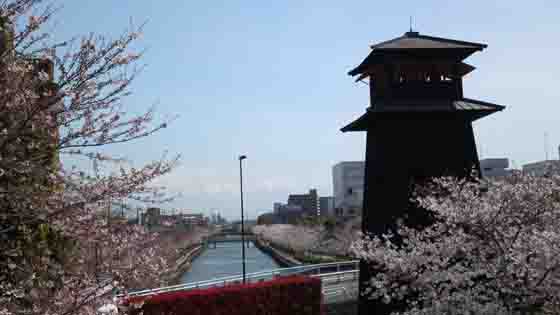
A Walk Along Shinkawa River
There are some Edo style, some wooden buildings and thousands of cherry trees along the river.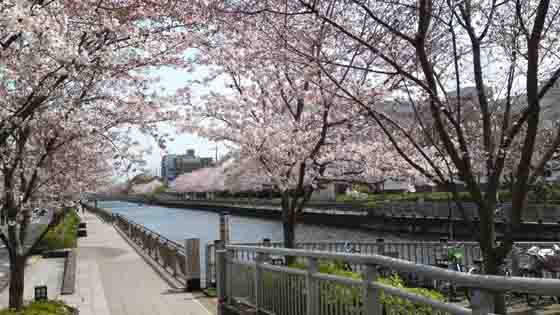
Thousands of Cherry Trees along Shinkawa River
In spring, thousands of sakura along it beautifully bloom.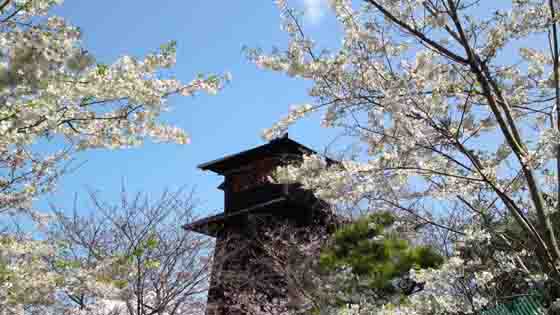
Shinkawa Nishi Suimon Hiroba Plaza
There are a Edo style fire lookout and an old lock gate in the plaza.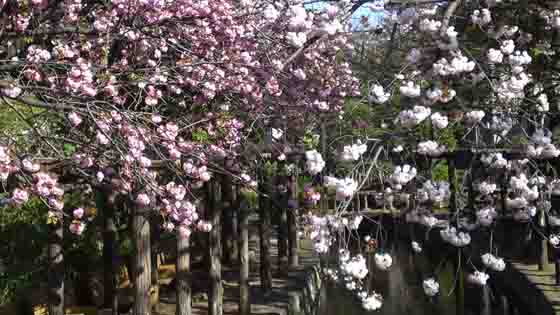
Furukawa Water Park
It is the first water park in Japan and a famous spot for viewing Sakura and hydrangeas.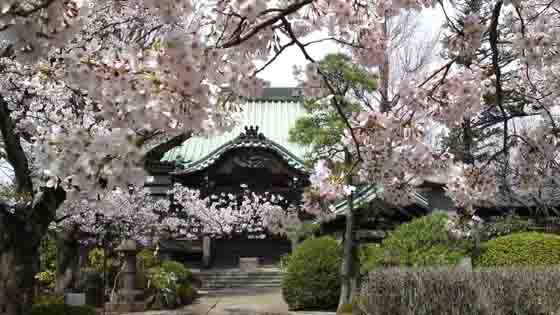
Honkakusan Myoshoji Temple
There are some seasonal flowers blooming in every season, sakura especially blooms beautifully.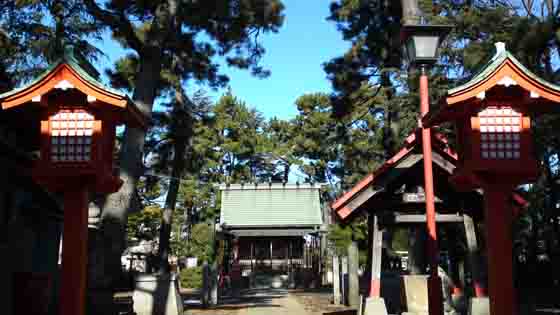
Ninoe Jinja Shrine
There are several tall pine trees and a 500 years old giant zelkova tree in the shrine.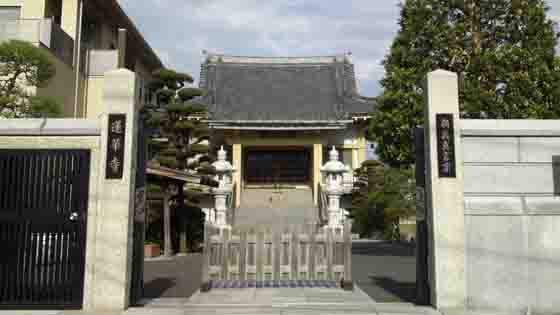
Kaishosan Rengeji Temple
The principle image is the statue of Sho Kanzeon Bosatsu carved by Gyoki.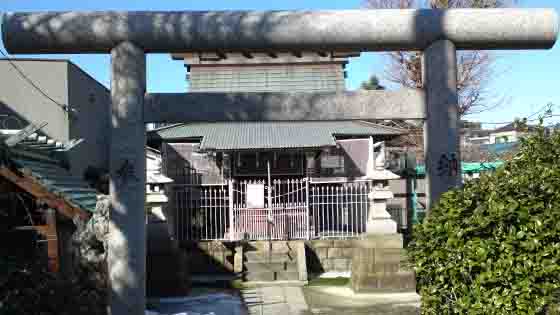
Kumano Jinja Shrine
There is a stone tablet scribing a haiku poem written by Basho Matsuo.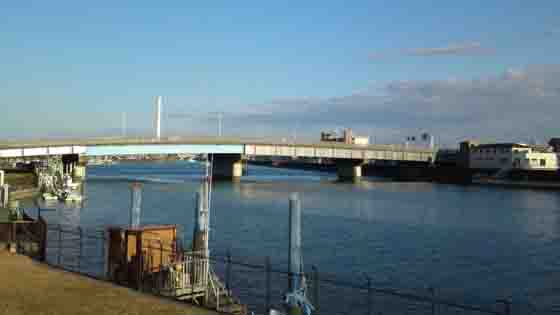
The Remain of the Ferry at Imai
The ferryport at Imai is appeared on an essey written by Socho, a renga poet in Muromachi period.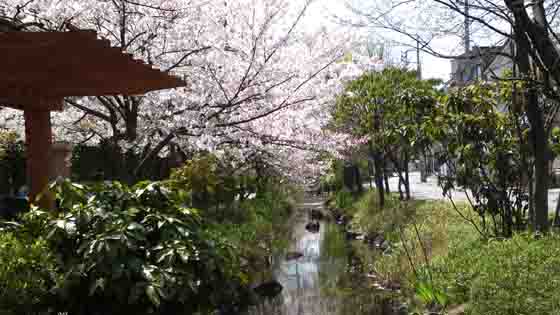
Ichinoe Sakaigawa Water Park
The park has many sakura and seasonal flowers, visitors could enjoy all seasons.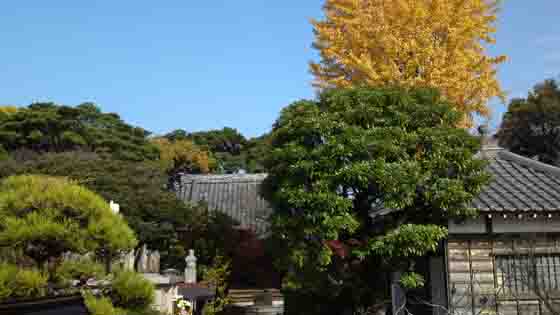
Iousan Myouonji Temple
It has the legend 'the One-eyed Crucial Carps' telling the miracle power to cure eye disease.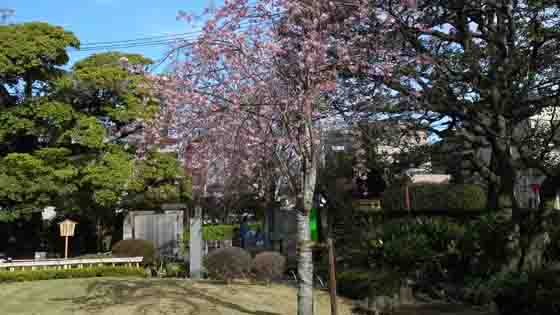
Ichinoe Makkotei Residence Park
In spring, weeping cherry trees bloom, in fall, colored leaves decorate the garden.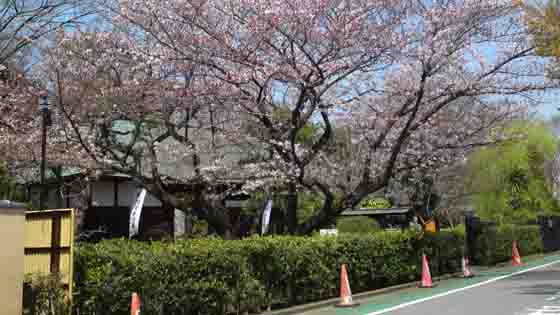
The Residence of Ichinoe Nanushi Yashiki
The traditional Japanese style residence with a thatched roof.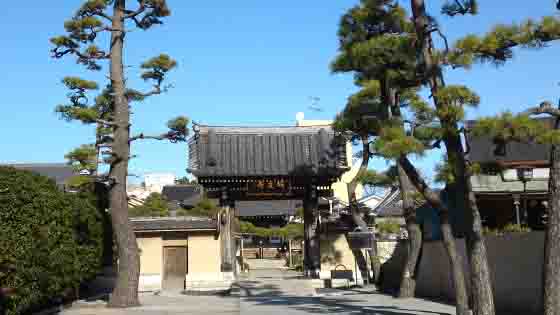
Honkosan Joryuji Temple
It is an important temple to know the history of Ichinoe area.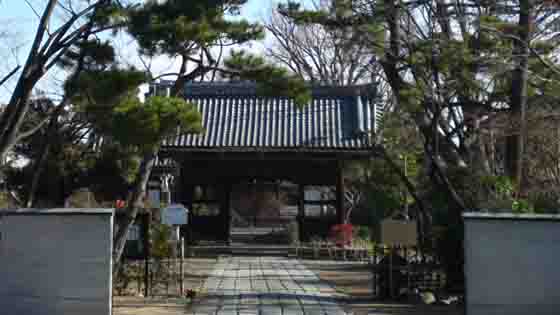
Chogyosan Daiunji Temple
It has tombs of Kabuki Yakusha and it is called Yakushadera.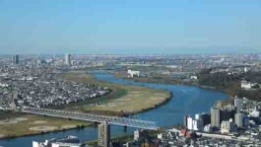
A Walk Along Edogawa River
The areas along the river have many noted spots that people could enjoy history and culture.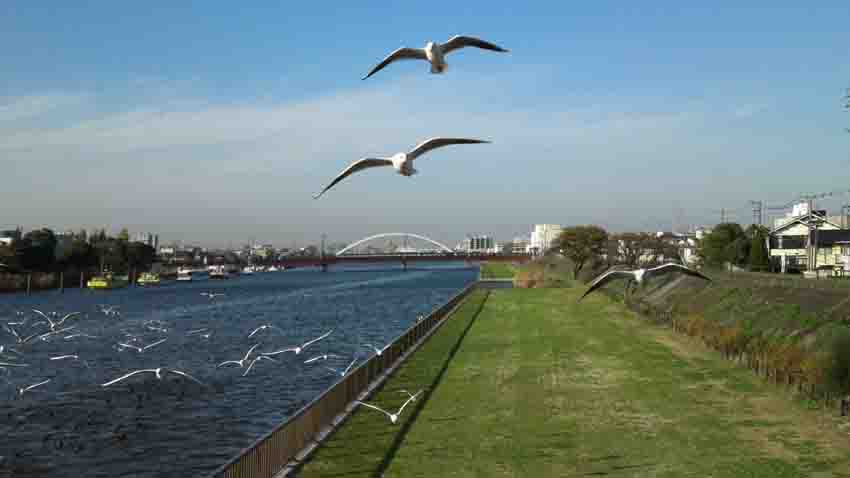
A Walk Along Shinnakagawa River
There are some historical and cultural spots along the river.- 広告 Advertisement -
